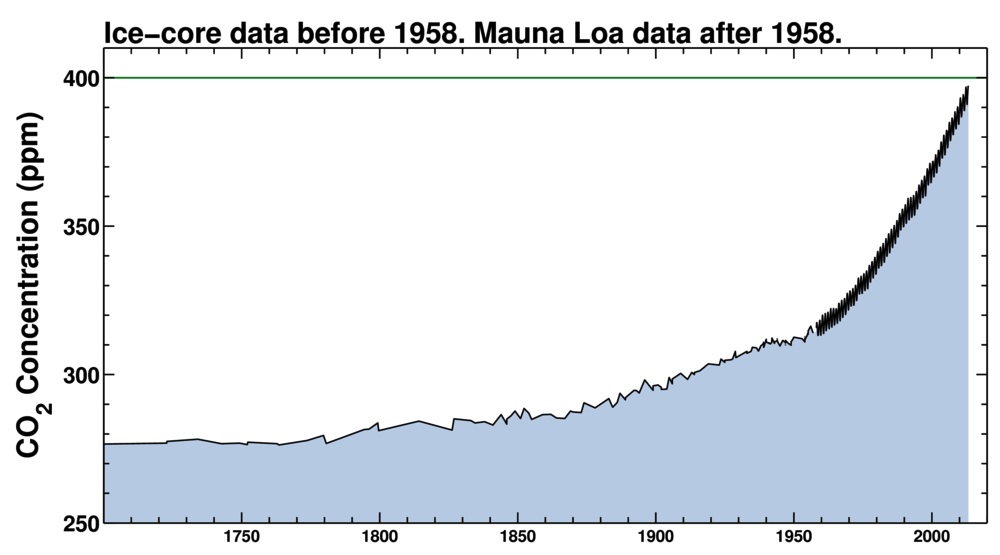This post is also available in: Spanish

This chart shows the evolution of CO2 concentration in parts per million (ppm) in the atmosphere in the latest 30 years.
(click on the image to enlarge).
Last month of may 2013, the 400 ppm CO2 threshold, which was considered by scientists a limit value, was overshot for the first time in history.
These are data from the Scripps Institution of Oceanography of the University of California -a worldwide recognised organization- measured in Hawaii, in the middle of the Pacific Ocean, an isolated place where pollution is lower.
What does 400 ppm mean?.
Appart from the consequences in the planet -global warming, changes in biological systems,…- which indirectly affects to human beings, current CO2 values convert the Earth into a kind of confined space:
- CO2 is a gas present in the atmosphere in a natural way in a concentration of 250 to 350 ppm.
- 350 to 1000 ppm is a good quality concentration in an enclosed room. This is what the Earth is, a confined space.
- 1000 to 2000 ppm, the air quality is low.
- From 2000 to 5000 ppm, CO2 concentration starts to cause problems (headaches, insomnia, nausea). It is a dirty air.
- From 5000 ppm, the presence of other gases in air is altered, arising a toxic atmosphere or poor in oxigen with fatal effects as the concentration increases.
So, 400 ppm are not directly dangerous for our health, although it is disappointing to figure out that natural air is, at best, similar to the air in a enclosed room. Going to a mountain to breathe pure air losses its sense in some way. The dramatic stuff is how vertical the Keeling Curve is, as well as its foreseen path: Before the Industrial Revolution (1780) CO2 concentration was 280 ppm; in 1958, 317 ppm; by 2040 it will be 450 ppm. The last section of the curve in the graph gives an image… The geometrical evolution of CO2 greenhouse emissions seems to have no ending.
Official responses.
An increase of 1,5 CO2 ppm a year won´t affect directly to the ones currently on Earth, but it will do to our closest descendants.
The 400 ppm milestone should be the critical warning sign to great organizations (countries and enterprises…). Although it seems that there is not a determined shift towards a true green economy, there are higher and higher voices going beyond renewable energies, sustainable cities or waste recycling. Gorvachev -today activist and president of Green Cross International-, top EU leaders or the serious problems reported in China, are examples of a step forward compared to what was seen until now.
Governments and great organisations must hear those messages and, above all, the warnings that the Earth is sending and take action on the development models before nature does with a fatal severity.
But, it is not only a duty of greatest leaders. Individual actions of each of us is also paramount. What´s more, I think that both, individual actions and global functioning, are closely related and are the two parts of a whole thing. They affect each other in the possitive or the negative.
To install renewable energy sources in our homes and bussines, to control consumption of natural resources, to classify our waste, to plant trees to balance our ecological footprint or to optimise our daily trips are little proofs in our attitude change towards the global objective: the responsible consumption of natural resources.
I keep in mind one phrase which increases the level of severity of the climate problem: “For the wellbeing of our direct descendants”.

 Aragonese
Aragonese English
English Spanish
Spanish